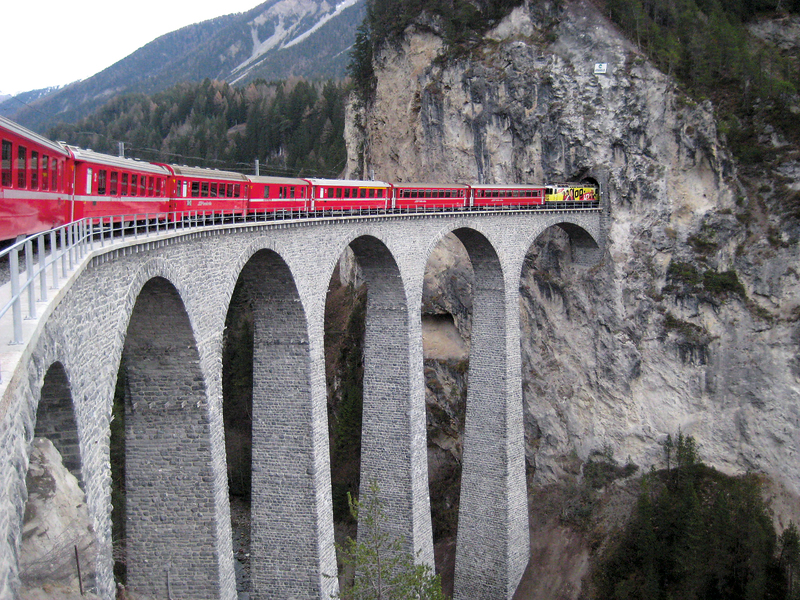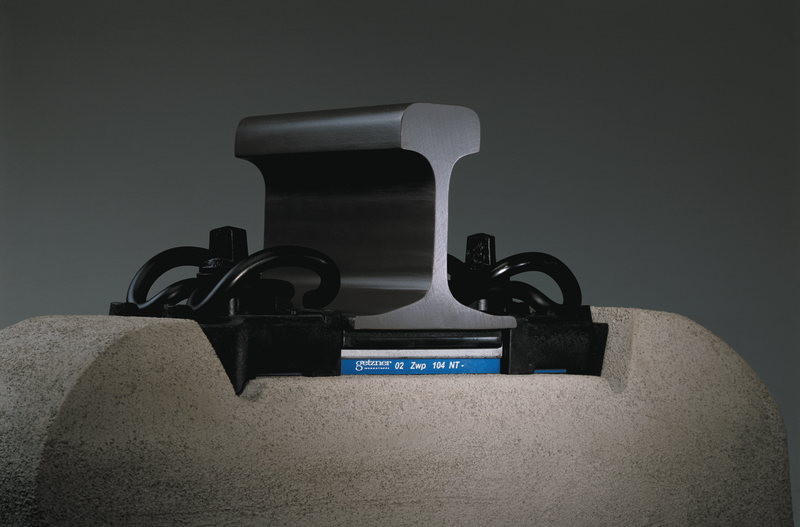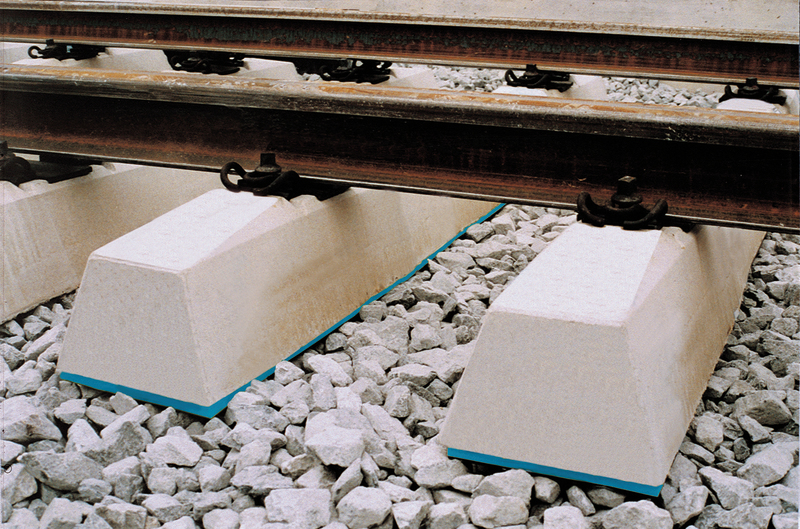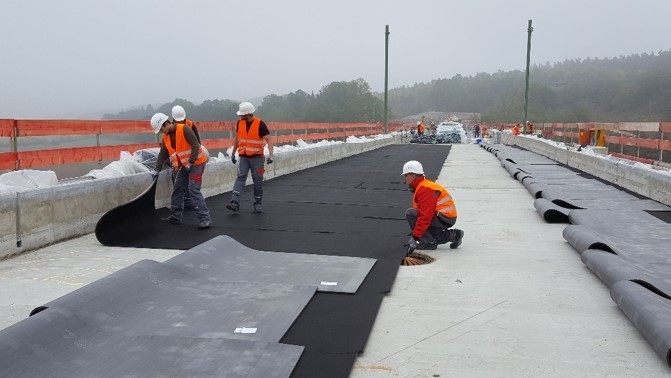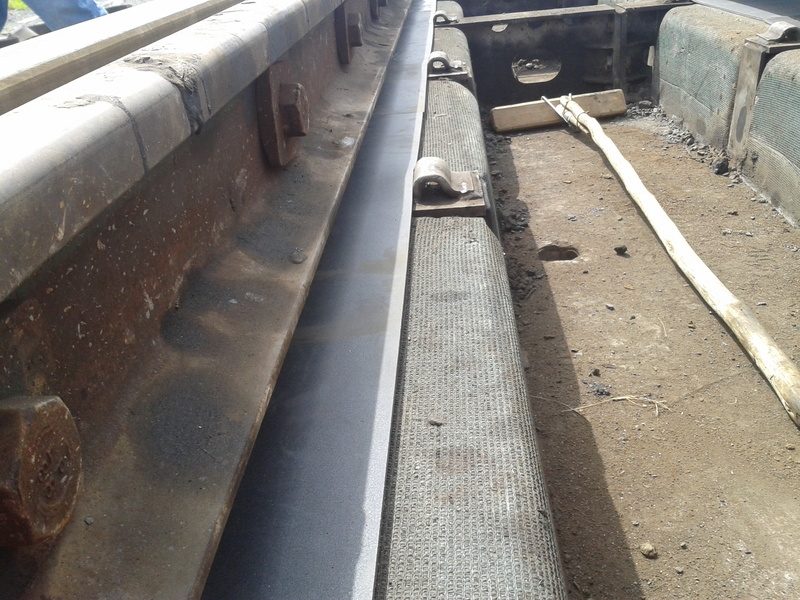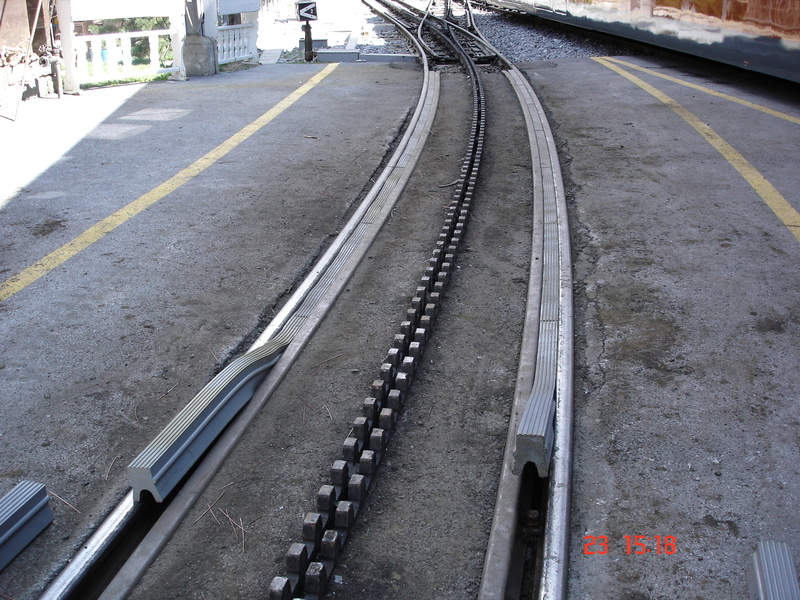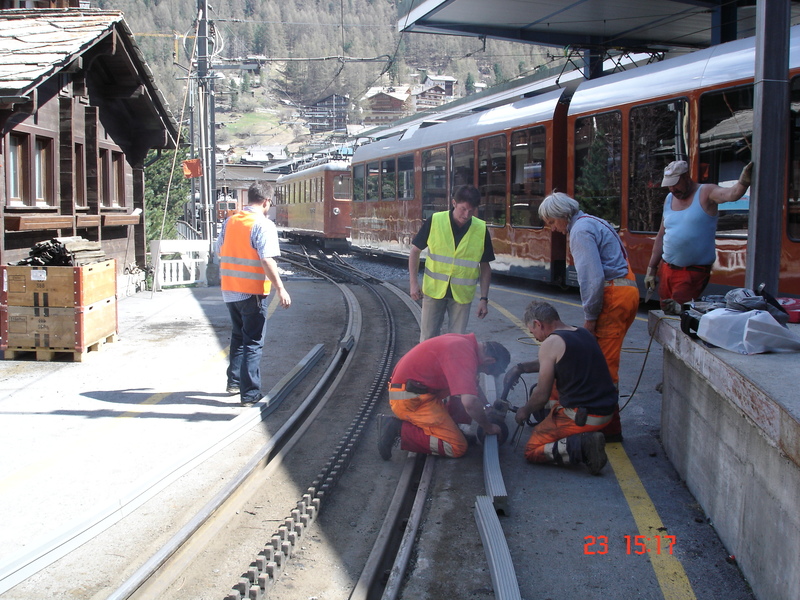Vibrations
Vibration protection for the Railroad
The main problems of rail transport are, on the one hand, vibrations that are transmitted from the track superstructure to the surroundings. People perceive them as vibrations or structure-borne noise. On the other hand, it is the maintenance effort that results from the material wear due to lack of elasticity in the track. Highly elastic products and systems for vibration isolation significantly reduce the effort that wear of superstructure components and vehicles causes. These in-house developments are geared to the requirements of all axle loads and speeds. They are in use worldwide and trend-setting.
The economic solutions provide an efficient vibration protection for all areas:
- railroad
- high speed
- inner-city traffic (urban and underground)
- heavy load traffic
- public transport
Solutions for the railway sector
Layers in between
These layers are elastic polyurethane materials that are laid directly under the rail foot. They have a defined stiffness and increase the elasticity of the ballast track. The improved load distribution results in greater ride comfort and a protection of the superstructure: The increased elasticity has a positive effect on the wear of the superstructure components and vehicles. The layers are available for every required rigidity and for all areas – and in many different designs.
Plates in between
Modern railway lines are increasingly being executed as fixed-carriageway systems. For the elasticity on such routes, highly elastic in between plates are provided. They are installed between the ribbed plate and the concrete support plate. Elastic in between plates maintain the load-distributing effect of the rail and reduce vibrations due to wheel and road bumps. By an adapted stiffness distribution of the intermediate plate, the rail head deflection can be reduced when trains are crossing.
Inserted plates for sleeper/tie shoes
Fixed-track systems require sufficient elasticity to activate the load-distributing effect of the rail. There are a lot of possibilities of arranging the elastic components. An elastically mounted threshold block has the advantage that the additional mass traversing the oscillation path reduces the airborne sound radiation. A larger elastic bearing surface also has smaller edge pressures as a result. A two-stage elasticity additionally reduces the pressure in the insert plate and protects the rail fastening. Since inserted plates are manufactured in any desired stiffness, different requirements can be met. This system is primarily used on tunnels of various categories.
Sleeper/tie soles
Sleeper/tie soles provide protection against vibration, the protection of the ballast under the tracks and an improved track stability. They are used on high-speed lines as well as on routes with high axle loads and to rehabilitate existing routes. The installation of sleeper/tie bearings is already carried out in the sleeper/tie plants with the aid of an optimized composite system. Therefore, no additional work is required on the construction site. Installation is quick, weather-independent and with minimal downtime for the trains.
Mass-spring systems
Mass-spring systems are installed where the protection against structure-borne noise and vibrations is set to the highest standards. The bearings for mass-spring systems protect the residents of a railway line very effectively against noise and vibrations. Efficient vibration isolation has a positive effect on the price level of properties subject to vibration. Three possible designs are available for the storage of mass-spring systems. Which one of these designs is used depends on economic as well as technical facts. For the mass-spring systems in local and long-distance traffic, the lowest natural frequency reached so far is 5 Hz.
Mass-spring systems for trams
The lightweight mass-spring system, as a variant of a full-surface storage, is mainly used in urban railway systems. In this procedure, the track body is separated by floor and side mats with anti-vibration technology to completely protect the environment from noise pollution.
Ballast mats
A high degree of railroad elasticity is achieved by the installation of sub-ballast mats. A reduction of secondary airborne sound, vibration protection and gravel protection can be reasons for installation. When selecting a suitable mat, the respective vibration requirements are taken into consideration. The high efficiency of the mats is based on the adjusted dynamic stiffness. In addition, they are characterized by their quality and cost-effectiveness. They are easy to handle, easy to lay and they can be driven on by heavy construction equipment. Even with a subsequent installation, the mats have proven themselves in combination with a special procedure. The economic and technical performance of sub-ballast mats is appreciated worldwide in high-speed lines, full-railway lines and public transport lines.
The "continuous rail mounting"
The "continuous rail mounting" is a continuous, elastic rail foot bearing, which compensates for installation-related height differences. The stiffness and the depression of the rail are previously defined precisely and ensured by a suitable material selection. The "continuous rail storage" is an efficient and economical solution.
Rail groove fillers
Locally routed rail profiles and tracks, which are crossed by individual traffic, are a typical application for rut fillers. They offer the possibility to close the groove necessary for the rail wheel and eliminate a danger spot for the public transport. Further areas of application are level crossings and sidings on factory premises.
Elastic solutions for the rail vehicle construction
Polyurethane materials are not only successfully used in railway superstructures, they also efficiently isolate vibrations in rail vehicles. They are also used as elastic floor supports for passenger cars and locomotives as well as special bearings for air conditioning units. The solutions protect the car from unwanted vibrations while driving and reduce vibrations to a minimum: Structural vibrations are significantly reduced, thereby increasing the travel comfort, the life of a wagon and its components.
Waggon floor bearings are based on the specially developed and EN 45545-2 certified polyurethane material Sylomer® Fire-retardant. The Sylomer® aluminum vibration damper that offers particularly lightweight and compact vibration protection in car floors. It is used when simple screw mounting is required. The Isotop® DZE Railway effectively protects the passenger area from vibrations caused by air conditioners and other aggregates.
Application examples:
- elastic floor superstructures for rail vehicles
- storage of individual vehicle components
- storage of vehicle areas: driver's cab, 1st class, wet cells, etc.
- decoupling of ventilation units, HVAC equipment and compressors
- splash guard in the chassis
- elastic bearing of rigid magnet brakes
Advantages:
- reduces the noise level in the wagon interior
- increases ride comfort for passengers and train crew
- increases the service life of rail vehicles and components
The materials
To isolate vibrations, continuous (one-piece) polyurethane mats are developed and produced. The solutions made of these materials ensure a high quality of work and life by decoupling routes, but also entire buildings, parts of buildings or even machines' vibration technology. A vibration protection with these materials makes sense both at the source and at the receiver: An elastic bearing of the vibration exciter – as anengine, air conditioner or a railway line – reduces the propagation of structure-borne noise efficiently. Elastic decoupling at the receiver – e.g. in a building or a sensitive device, etc. – prevents vibrations from affecting the quality of life or functionality.
Effect of the materials
- less vibration and noise
- higher route availability and less maintenance and maintenance costs for railway lines
- longer life of used components (less wear)
- more comfort (e.g. for passengers, when operating devices, in living spaces and acoustically sensitive buildings)
- higher precision (e.g. machines)
Properties of the materials
- reliable, homogeneous and durable elasticity (more than 30 years proven)
- resistant to short-term, even extreme overloading
- water resistant (even in stagnant water) and fire resistant (as required)
- direct driving by heavy vehicles is unproblematic
- uncomplicated in compensating for building tolerances
- simple construction costs by simple and fast installation
- different dimensions and available in different designs (variation of density, thickness and surface of the material)
- long-term stability
In friendly cooperation with GETZNER Werkstoffe GmbH.

